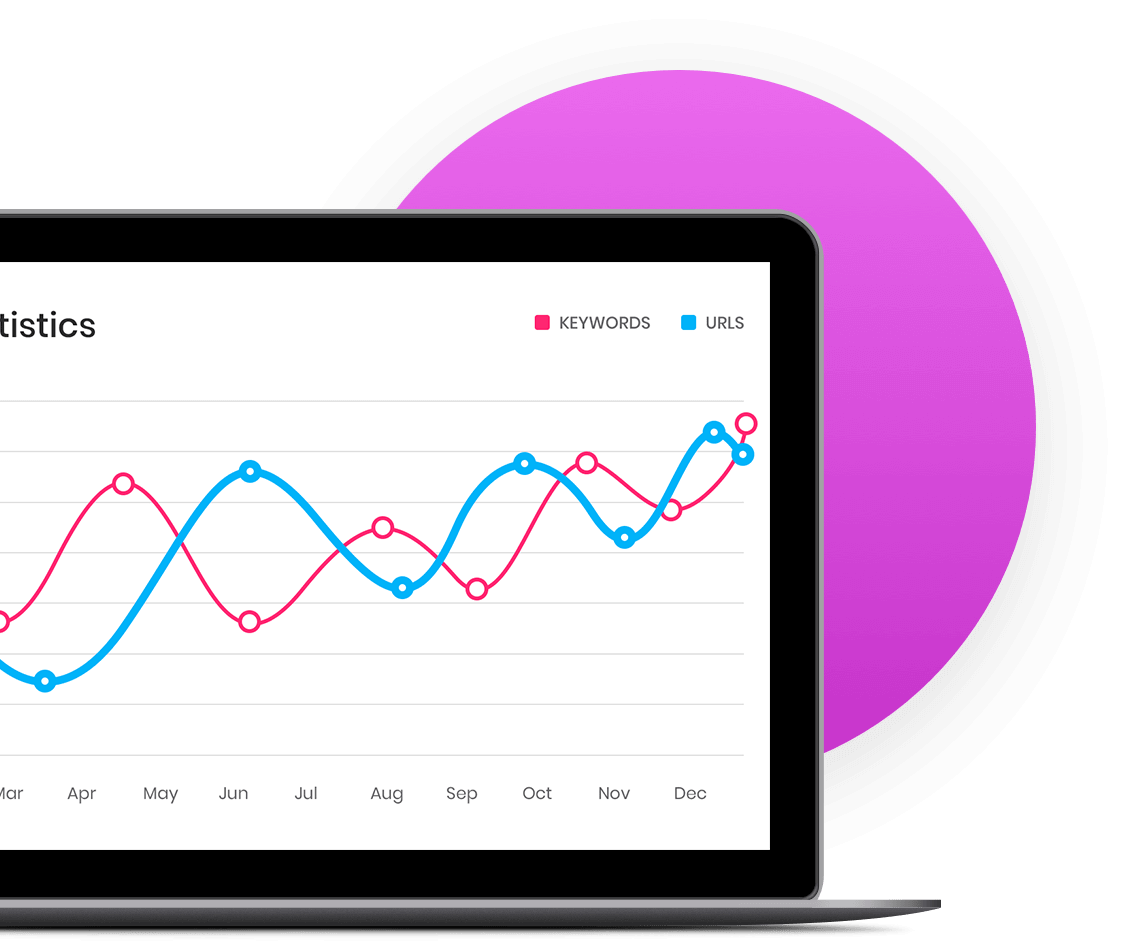In today’s digital world, successful ecommerce businesses understand that strategic cross-selling isn’t just an extra feature – it’s a crucial part of sustainable growth. Cross-selling is a powerful way to increase revenue while providing real value to customers through recommendations for complementary products.
The competitive nature of online retail requires advanced marketing strategies that go beyond basic promotional methods. As consumers become more selective with their purchases, businesses must adopt clever approaches to stand out and gain market share.
Cross-selling offers several advantages for ecommerce operations:
- Revenue Enhancement: Increases average order value through strategic product pairing
- Customer Satisfaction: Improves shopping experience by suggesting relevant, useful additions
- Brand Loyalty: Demonstrates understanding of customer needs through personalised recommendations
- Cost-Effective Growth: Maximises existing customer relationships rather than solely pursuing new ones
To achieve these benefits, using a robust CRM system can be incredibly beneficial. A well-implemented CRM strategy can streamline processes, boost customer satisfaction and ultimately increase sales.
This comprehensive guide explores how cross-selling strategies can transform your ecommerce performance, backed by proven techniques and real-world applications that drive measurable results.
Understanding Cross-Selling in Ecommerce
Cross-selling is a strategic sales technique where businesses recommend related products or services to customers based on what they initially intended to buy. In the world of ecommerce, this practice evolves into a more advanced digital strategy that uses user behaviour, purchase history and product connections to generate extra sales.
Common Types of Cross-Selling Opportunities:
- Product Pairing: Suggesting phone cases when customers browse smartphones
- Accessory Recommendations: Offering camera lenses alongside DSLR purchases
- Consumable Add-ons: Recommending printer ink with printer purchases
- Service Extensions: Promoting extended warranties for electronic devices
- Bundle Suggestions: Creating themed collections of related items
Cross-selling in ecommerce goes beyond basic product recommendations. Modern platforms use complex algorithms to identify genuine product connections and display them at the best times during the customer’s journey.
Value Enhancement Through Cross-Selling:
- Saves customers time by anticipating their needs
- Introduces buyers to relevant products they might have missed
- Creates a more comprehensive shopping solution
- Builds product awareness across different categories
- Delivers personalised shopping experiences
Successful cross-selling strategies prioritise genuine customer value instead of pushing unnecessary purchases. When done thoughtfully, these recommendations help shoppers find products that enhance their initial purchase and create a more enjoyable shopping experience.
The online nature of ecommerce allows businesses to monitor customer interactions, assess the impact of cross-sell suggestions and improve their approach using real-time data. This ongoing optimisation ensures that cross-selling remains profitable for businesses and beneficial for customers.
The Impact of Cross-Selling on Ecommerce Performance Metrics
Cross-selling strategies directly influence crucial ecommerce performance metrics, particularly average order value (AOV) and customer lifetime value (LTV). These metrics serve as vital indicators of business growth and sustainability.
When customers add complementary items to their purchases, the immediate effect reflects in the AOV. A study by Forrester Research revealed that cross-selling can increase sales by 10-30% on average. For instance, a fashion retailer implementing product recommendations saw their AOV rise from £45 to £65 after suggesting matching accessories with main clothing items.
Key Performance Indicators Affected by Cross-Selling:
Average Order Value (AOV)
- Increased basket size through relevant product suggestions
- Higher purchase value with complementary items
- Enhanced product discovery leading to additional purchases
Customer Lifetime Value (LTV)
- Strengthened brand relationship through personalised recommendations
- Repeated purchases of complementary items
- Greater customer satisfaction with complete product solutions
Real-world success stories demonstrate the power of strategic cross-selling. Amazon attributes up to 35% of its revenue to its cross-selling system, “Frequently Bought Together”. Similarly, Sephora’s beauty marketplace increased their conversion rates by 6% through personalised product recommendations.
The data-driven approach to cross-selling yields measurable results. A UK-based electronics retailer implemented AI-powered product suggestions, resulting in:
“Our cross-selling initiative generated a 24% increase in AOV within the first quarter, while customer satisfaction scores improved by 15%” – Digital Commerce Director
These metrics showcase how cross-selling transforms casual shoppers into valuable long-term customers. By analysing purchase patterns and customer behaviour, businesses can refine their cross-selling strategies to maximise revenue potential and enhance customer satisfaction simultaneously.
Implementing Effective Cross-Selling Strategies
Successful cross-selling strategies rely heavily on data-driven insights and personalised customer experiences. By leveraging customer data effectively, businesses can create targeted recommendations that resonate with their audience at precisely the right moment.
Leveraging Customer Data for Personalised Recommendations
Customer data collection methods include:
- Purchase History Analysis: Track past buying patterns to identify complementary product opportunities
- Browsing Behaviour: Monitor product page visits, cart additions and wishlist items
- Customer Segmentation: Group buyers based on demographics, preferences and spending habits
- Real-time Engagement: Analyse current session behaviour for immediate cross-sell opportunities
Advanced Segmentation Techniques
Creating detailed customer segments enables precise targeting:
- RFM Analysis
- Recency of purchases
- Frequency of interactions
- Monetary value of transactions
- Behavioural Segmentation
- Shopping cart abandonment patterns
- Category preferences
- Device usage
- Time-based shopping habits
Tools and Techniques for Optimising Cross-Sell Performance
A/B Testing Strategies
Successful A/B testing focuses on:
- Product placement on category pages
- Cross-sell timing during customer journey
- Visual presentation of recommendations
- Messaging and call-to-action variations
- Price point combinations
Essential CRO Tools
Popular tools for cross-sell optimisation:
- Dynamic Yield: Personalisation platform with advanced A/B testing capabilities
- Optimizely: Enterprise-level experimentation and personalisation
- VWO: Comprehensive testing and conversion optimisation suite
- Google Optimize: Entry-level A/B testing integrated with Analytics
- Hotjar: User behaviour analysis and heatmapping
Implementation Best Practices
- Display cross-sell items at natural decision points
- Limit recommendations to 3-5 relevant products
- Include clear product images and concise descriptions
- Show real-time stock levels to create urgency
- Maintain consistent pricing strategies
The success of cross-selling initiatives depends on continuous testing and refinement. Regular analysis of performance metrics helps identify winning combinations and areas for improvement. By combining robust data analysis with strategic implementation, businesses can create cross-selling experiences that drive significant revenue growth while maintaining customer satisfaction.
Integrating Cross-Selling with Other Ecommerce Marketing Tactics
Cross-selling thrives when integrated with complementary marketing strategies. A multi-faceted approach creates powerful synergies that amplify results across your ecommerce platform.
Product Bundling Strategies
- Create themed bundles that combine popular items with related cross-sell products
- Design seasonal packages that tap into time-sensitive buying behaviours
- Build customisable bundles allowing customers to select complementary items
Email Marketing Integration
- Segment customers based on purchase history to recommend relevant cross-sell items
- Send automated post-purchase emails featuring complementary products
- Include personalised product recommendations in order confirmation emails
- Create targeted campaigns highlighting bundle deals and package savings
Leveraging Advanced Technologies for Enhanced Cross-Selling Capabilities
- Machine learning algorithms analyse customer behaviour patterns
- Real-time product suggestions based on browsing history
- Predictive analytics to identify high-probability cross-sell opportunities
- Dynamic pricing adjustments for bundled offerings
- Virtual try-on experiences for complementary fashion items
- Home décor visualisation tools showing matching accessories
- Interactive product demonstrations highlighting compatible add-ons
- 360-degree product views with suggested pairings
Customer Journey Integration Points
- Homepage
- Personalised product collections
- Featured bundle displays
- AI-driven recommendations
- Product Pages
- Related items section
- “Frequently bought together” suggestions
- Bundle pricing options
- Shopping Cart
- Last-minute add-on suggestions
- Bundle upgrade opportunities
- Complementary product highlights
- Post-Purchase
- Targeted follow-up recommendations
- Exclusive bundle offers
- Personalised accessory suggestions
The integration of these technologies and strategies creates a seamless shopping experience that naturally guides customers toward relevant cross-sell opportunities. Advanced data analytics enable real-time optimisation of these touchpoints, ensuring maximum relevance and conversion potential.
Case Study: Alloy Marketing’s Approach to Driving Ecommerce Growth Through Cross-Sells
Alloy Marketing, a leading Marketing Agency in Manchester, has a proven track record of success over the past 11 years. With a team that has more than 50 years of combined experience in digital marketing, their mission is to generate qualified leads and sales using data-driven strategies that are customised to meet the specific needs of each client.
Success Story: Online Fashion Retailer
One notable example of Alloy’s success with cross-selling is their work with an online fashion retailer. By using AI-powered product recommendations and strategically placing complementary items, the client saw:
- 32% increase in average order value
- 45% higher customer lifetime value
- 28% improvement in cart completion rates
The key to these impressive results was Alloy’s systematic approach:
- Deep Data Analysis: Using advanced analytics to gain insights into customer behaviour
- Strategic Segmentation: Identifying specific cross-sell opportunities based on purchase history
- Continuous Testing: Conducting regular A/B tests to optimise the placement and timing of recommendations
“Alloy’s data-driven approach transformed our cross-selling strategy. Their insights helped us identify opportunities we hadn’t considered, leading to significant revenue growth.” – Fashion Retailer Client
Success Story: Home Furnishings Client
Their success isn’t limited to fashion retail. A home furnishings client achieved similar results through personalised email marketing campaigns featuring complementary products, resulting in a 25% increase in repeat purchases within six months.
These case studies showcase Alloy Marketing’s ability to effectively implement cross-selling strategies across various ecommerce industries, driving tangible business growth through targeted and data-informed methods.
Comprehensive Services for Ecommerce Growth
In addition to their expertise in cross-selling, Alloy Marketing offers a range of services designed to support ecommerce growth:
- Expert SEO strategies for improved organic visibility
- Google Ads management as a PPC agency for targeted online advertising
- Comprehensive CRM setup service to enhance customer conversion and satisfaction
With their diverse skill set and proven track record, Alloy Marketing is well-equipped to help businesses achieve their ecommerce goals.
Best Practices for Sustaining Long-Term Ecommerce Success with Cross-Sells
Successful cross-selling strategies require continuous refinement and adaptation to maintain their effectiveness. A data-driven approach to optimisation helps identify opportunities for improvement and ensures cross-selling efforts remain profitable.
Key Optimisation Practices:
- Regular analysis of cross-sell performance metrics
- Testing different product combinations and placements
- Adjusting pricing strategies for bundled offerings
- Refining recommendation algorithms based on customer behaviour
- Monitoring seasonal trends and market changes
Building sustainable ecommerce growth extends beyond cross-selling tactics. Businesses must create a comprehensive customer retention strategy that encompasses multiple touchpoints.
Brand Loyalty Drivers:
- Personalised customer service experiences
- Responsive support across multiple channels
- Membership programmes with exclusive benefits
- Custom product recommendations based on purchase history
- Post-purchase follow-up communications
Social proof plays a vital role in establishing trust and encouraging repeat purchases. Businesses can leverage various forms of social validation, including the use of social proof advertising strategies, which may involve:
- Customer reviews and ratings
- User-generated content showcasing product usage
- Expert endorsements and certifications
- Social media engagement and community building
- Case studies highlighting customer success stories
The integration of customer feedback loops helps businesses adapt their cross-selling approaches while maintaining authenticity. Regular surveys, customer interviews and behaviour analysis provide insights for refining product recommendations and improving the shopping experience.
Investing in employee training ensures consistent service delivery and knowledgeable product recommendations. Staff members who understand both the technical aspects and customer benefits of complementary products can create more meaningful cross-selling opportunities.
Conclusion
Cross-selling is a powerful tool for ecommerce growth when done thoughtfully as part of a comprehensive marketing strategy. It requires a balanced approach that focuses on both increasing revenue and improving customer experience.
Successful cross-selling goes beyond simply suggesting additional products. It involves:
- Understanding customer preferences
- Pairing products strategically
- Timing recommendations accurately
- Integrating seamlessly across all channels
The true power of cross-selling comes into play when businesses see it as part of their larger customer engagement strategy. This shift in mindset turns cross-selling from just a sales tactic into a valuable service that helps customers find products that truly meet their needs.
A data-driven approach to cross-selling, along with continuous testing and improvement, lays the groundwork for long-term success in ecommerce. This method ensures that businesses can adjust their strategies as market conditions and customer preferences change.
However, it’s important to remember that cross-selling should be part of a broader marketing strategy that includes SEO and potentially local SEO efforts. These strategies can greatly improve online visibility, bringing more traffic to your ecommerce site and ultimately leading to increased sales.
FAQs
What is cross-selling in ecommerce and why is it important?
Cross-selling in ecommerce refers to the strategy of offering complementary products or services alongside a customer’s initial purchase. It is important because it enhances the shopping experience by providing more value and convenience, ultimately boosting ecommerce performance through increased revenue and improved customer satisfaction.
How does cross-selling impact key ecommerce performance metrics like Average Order Value (AOV) and Customer Lifetime Value (LTV)?
Effective cross-selling strategies directly contribute to increasing Average Order Value (AOV) by encouraging customers to add more items to their cart. Additionally, by offering relevant complementary products, cross-selling can enhance Customer Lifetime Value (LTV) through improved customer retention and repeat purchases, driving substantial ecommerce revenue growth.
What are some effective methods for implementing personalized cross-selling strategies in ecommerce?
Implementing personalized cross-selling involves leveraging customer data such as purchase history and browsing behaviour to deliver relevant product recommendations at optimal times during the buying journey. Utilizing data-driven marketing techniques, advanced segmentation, A/B testing and conversion rate optimization (CRO) tools can refine messaging and placement for maximum effectiveness.
How can ecommerce businesses integrate cross-selling with other marketing tactics to maximize results?
Cross-selling can be synergistically combined with upselling, product bundling, email marketing campaigns and emerging technologies like AI algorithms and augmented reality applications. Aligning these tactics cohesively across different customer touchpoints – from awareness to post-purchase follow-up – creates a seamless experience that drives higher engagement and sales.
What advanced technologies can enhance cross-selling capabilities in ecommerce?
Innovative solutions such as AI-powered recommendation engines enable highly personalized product suggestions based on customer data. Augmented reality (AR) applications allow virtual try-on experiences for complementary products, increasing customer confidence and engagement. These technologies elevate cross-selling efforts by creating interactive and tailored shopping experiences.
What best practices should ecommerce businesses follow to sustain long-term success with cross-selling strategies?
To sustain long-term success, businesses should continuously optimize their cross-selling initiatives using data insights and testing. Beyond cross-selling, focusing on customer retention through exceptional service, building strong brand loyalty and leveraging social proof helps maintain trust and encourages repeat business. Integrating cross-selling within a holistic marketing strategy ensures ongoing revenue growth and value delivery at every stage of the customer journey.






